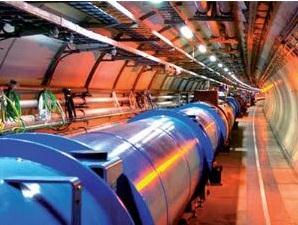February 14, 2013
LONDON: Months after the landmark discovery of a potential Higgs boson particle, CERN scientists will shut down its Large Hadron Collider (LHC) to upgrade the machine for advance experiments.

February 14, 2013
LONDON: Months after the landmark discovery of a potential Higgs boson particle, CERN scientists will shut down its Large Hadron Collider (LHC) to upgrade the machine for advance experiments.

The Europe's top physics lab will take a break from smashing invisible particles for a period of two years. The LHC has provided physicists with a huge quantity of data to analyse since the first physics run in 2009.
Now it is time for the machine, along with CERN's other accelerators, to get a facelift. " Long Shutdown 1" (LS1) will begin today, CERN said in a statement.
Although there will be no collisions for a period of almost two years, the whole CERN site will be a hive of activity, with large-scale work under way to modernize the infrastructure and prepare the LHC for operation at higher energy.
"A whole series of renovation work will be carried out around the LHC during LS1," says Simon Baird, deputy head of the engineering department.
"The key driver is of course the consolidation of the 10,170 high-current splices between the superconducting magnets.
"The teams will start by opening up the 1695 interconnections between each of the cryostats of the main magnets. They will repair and consolidate around 500 interconnections simultaneously. The maintenance work will gradually cover the entire 27-kilometre circumference of the LHC," Baird said in a statement.
The LHC will be upgraded as well as renovated during the period concerned. In the framework of the radiation to electronics project (R2E), sensitive electronic equipment protection will be optimised by relocating the equipment or by adding shielding.
The work will by no means be confined to the LHC. Major renovation work is scheduled, for example, for the Proton Synchrotron (PS) and the Super Proton Synchrotron (SPS).
At the SPS, about 100 kilometres of radiation-damaged cables used in the instrumentation and control systems will be removed or replaced.
The Higgs boson or Higgs particle is a theoretical elementary particle predicted almost 50 years ago to exist by the standard model of particle physics.
A previously unknown particle was discovered in 2012, however, its properties are still being studied in 2013 to learn whether or not it is the Higgs boson.
Courtesy: PTI













































































































